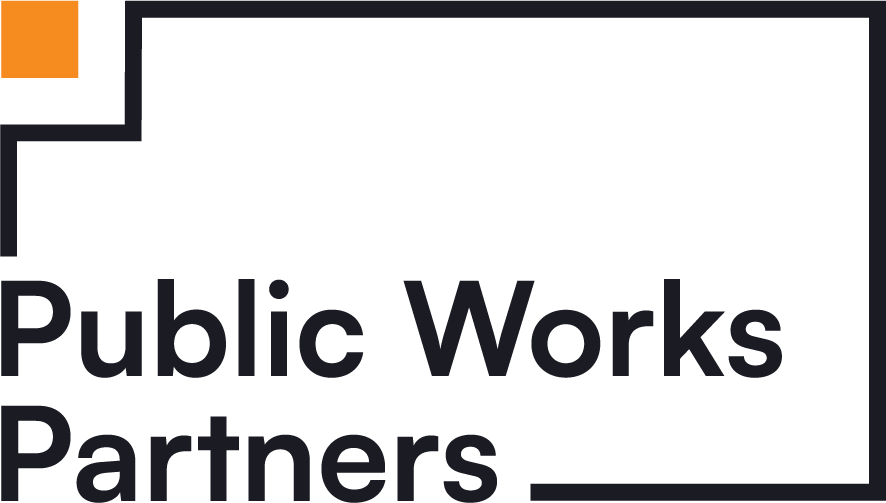The American Rescue Plan (ARP) Act is working its way into your community to extend needed economic support as a result of the COVID-19 pandemic. As an overview, the ARP provides supplemental unemployment benefits; direct cash payments to individuals and families; grants to small businesses; funding for state, local, and tribal governments; funding for housing and education; increased Supplemental Nutrition Assistance Program (SNAP) benefits; COVID-19 and other healthcare funding, including COVID-19 vaccines, testing, and contact tracing; and transportation provisions. Collectively, these areas of focus represent an opportunity for eligible organizations to build more resilient systems and processes that translate lessons learned from the pandemic into transformative policies.
We’ve put together an explainer on the history of stimulus funding over the past year as well as the major components of the American Recovery Plan Act to clarify opportunities for funding and beyond for our community of nonprofit and civic organizations.
Background on the American Rescue Plan Act and prior legislation
The American Rescue Plan Act is the latest wave of stimulus funding since the start of the COVID-19 pandemic. The ARP stands at $1.9 trillion, making it the second-largest stimulus package since the COVID-19 pandemic began, just trailing behind the CARES Act ($2.2 trillion). The ARP is preceded by and builds upon seven previous laws designated to address the economic impacts of the COVID-19 pandemic. With the ARP in effect, cumulative COVID-19 relief has reached nearly $6 trillion.
Stimulus Timeline_2021-04-06
Financial Breakdown of Additional Relief
 Grants to small businesses: The ARP includes $50 billion in funding for small businesses, of which $7.25 billion in funding has been allocated for further rounds of Paycheck Protection Program (PPP) loans.
Grants to small businesses: The ARP includes $50 billion in funding for small businesses, of which $7.25 billion in funding has been allocated for further rounds of Paycheck Protection Program (PPP) loans.
 Funding for education: The ARP allocates $125 billion for the K-12 education system and nearly $40 billion for the higher education system. Top priorities include, safely reopening schools for in-person instruction and providing for the needs of students, including mental health services and closing the academic equity gap.
Funding for education: The ARP allocates $125 billion for the K-12 education system and nearly $40 billion for the higher education system. Top priorities include, safely reopening schools for in-person instruction and providing for the needs of students, including mental health services and closing the academic equity gap.
 Funding for housing: The ARP offers funding for states, territories, and local governments to assist with housing, which includes $10 billion in homeowner assistance, $5 billion for emergency housing vouchers, $21.6 billion in emergency rental assistance, $5 billion for homelessness assistance and support services programs, and $20 million for fair housing initiatives.
Funding for housing: The ARP offers funding for states, territories, and local governments to assist with housing, which includes $10 billion in homeowner assistance, $5 billion for emergency housing vouchers, $21.6 billion in emergency rental assistance, $5 billion for homelessness assistance and support services programs, and $20 million for fair housing initiatives.
 Funding for nutrition assistance and Increased Supplemental Nutrition Assistance Program (SNAP) benefits: Under the ARP, $12 billion has been earmarked for food assistance programs, which includes $3.5 billion in funding for SNAP benefits. The ARP effectively extends the 15 percent increase in monthly benefits to all SNAP recipients through September.
Funding for nutrition assistance and Increased Supplemental Nutrition Assistance Program (SNAP) benefits: Under the ARP, $12 billion has been earmarked for food assistance programs, which includes $3.5 billion in funding for SNAP benefits. The ARP effectively extends the 15 percent increase in monthly benefits to all SNAP recipients through September.
 Funding for COVID-19 and other healthcare, including COVID-19 vaccines, testing, and contact tracing: The ARP provides upwards of $75 billion in additional healthcare funding, which includes $7.5 billion to support vaccination and treatment, $7.66 billion for the state, territorial, and local public health departments to cover equipment costs and healthcare workforce expansion, and $47.8 billion in funding for an evidence-based national vaccination strategy. The ARP also offers state and local governments $3 billion in block grants to address mental health and substance abuse disorders, plus funds for behavioral health workforce education and community-based behavioral health services.
Funding for COVID-19 and other healthcare, including COVID-19 vaccines, testing, and contact tracing: The ARP provides upwards of $75 billion in additional healthcare funding, which includes $7.5 billion to support vaccination and treatment, $7.66 billion for the state, territorial, and local public health departments to cover equipment costs and healthcare workforce expansion, and $47.8 billion in funding for an evidence-based national vaccination strategy. The ARP also offers state and local governments $3 billion in block grants to address mental health and substance abuse disorders, plus funds for behavioral health workforce education and community-based behavioral health services.
 Funding for Transportation: The ARP includes $30.5 billion for transit agencies — the largest single infusion of federal aid public transportation has ever received.
Funding for Transportation: The ARP includes $30.5 billion for transit agencies — the largest single infusion of federal aid public transportation has ever received.
 Funding for Federal Emergency Management Agency (FEMA): The ARP allocates $50 billion in funding for FEMA’s Disaster Relief Fund (DRF), which will be used to cover future disaster declarations, as well as to address the ongoing impacts of the COVID-19 pandemic.
Funding for Federal Emergency Management Agency (FEMA): The ARP allocates $50 billion in funding for FEMA’s Disaster Relief Fund (DRF), which will be used to cover future disaster declarations, as well as to address the ongoing impacts of the COVID-19 pandemic.
How can the American Rescue Plan Funding Be Spent?
Like the CARES Act, funding for the American Rescue Plan Act can be used to respond to the public health emergency brought about by the COVID-19 pandemic and its negative economic impacts. However, a key feature of the ARP is that stimulus funding can also be used to replace lost revenue due to the pandemic. State, territorial, and Tribal governments can determine lost revenue by comparing current revenue and revenue projections to revenue from the previous full fiscal year prior to the pandemic. Funding from the ARP can also go toward aid for households, small businesses, nonprofits, and impacted industries. The Act also allows for funding to be invested in necessary water, sewer, or broadband infrastructure.
How This Impacts You
So, how much funding are New York State and New York City governments getting through the American Rescue Plan Act and how should funding be prioritized?
State and local governments are still working to clarify details on the allocation of the American Rescue Plan Act, which is expected to result in more than $24 billion for New York State and New York City governments combined. The City government is expected to receive approximately $4.33 billion, while City counties are expected to receive approximately $1.6 billion in combined funds. Additionally, United States Senator for New York and Senate Majority Leader, Chuck Schummer, estimates that New York state’s agencies and authorities will receive $30 billion in funding from the ARP in addition to funding outlined in the state and local fiscal relief fund. New York State and New York City governments will play an important role in making the funding accessible for hard-hit small businesses and local private nonprofits when details are finalized.
The ARP represents an opportunity for New York State and New York City governments to support workers who are already working in essential occupations or looking to enter them. Putting ARP funding toward skills development programs, especially digital skills development, through subsidized on-the-job training, for instance, will provide needed opportunities for job growth and will strengthen these occupations and the workforce by equipping workers with in-demand skills. Focusing these efforts on the communities that have seen the greatest hardships from the pandemic will advance a more equitable recovery for NYC while actively preparing the NYC workforce for future challenges.
In addition to supporting the essential workforce, New York State and New York City governments can take cues from the ways in which lifestyles have changed in response to the pandemic to support businesses. The ARP provides for investments in small businesses and impacted industries such as tourism, travel, and hospitality, as well as infrastructure such as broadband. Decisions around these investments could be based on an examination of new patterns of living and working – more people are spending more time in neighborhoods outside of Manhattan and other historic centers of commerce and tourism. Making strategic investments, policies, and initiatives that foster environments conducive to small business growth in more residential neighborhoods, such as investing in broadband infrastructure or lowering internet costs or developing streetscape improvements that allow for localized, safe business activities, could provide for a more equitable and robust recovery than a focus on pre-pandemic centers of commerce.
Public Works is here to support your organization as you navigate the funding application process and develop strategies to engage small businesses and those hardest hit by the pandemic. We have designed comprehensive outreach strategies for organizations such as Long Island City Partnership, designed and implemented programing that helped CUNY LaGuardia secure competitive funding, and supported the Sunset Park community as they built consensus around the South Brooklyn Marine Terminal. Our team of community and organizational health experts understand the complexities of the environment you are working within, and can help you build tools and programs that will increase your impact while meeting funding requirements. Have questions? Get in touch. Email us at info@publicworkspartners.com.
[author] [author_image timthumb=’on’]https://publicworkspartners.com/wp-content/uploads/2021/03/JordanCosby.jpg[/author_image] [author_info]Jordan leads complex multi-stakeholder urban planning engagements to support emergency management projects at Public Works. She brings together expertise in project management, public and nonprofit sector financial management, research, urban policy, and resilience planning in emergency situations. Jordan leverages systems mapping, community needs assessments, and existing conditions analysis to support mitigation planning and long-term vulnerability reduction. She also brings a commitment to building community and partnerships across stakeholder groups through clear and accessible communication strategies.[/author_info] [/author]
Sources
Committee for a Responsible Federal Budget. (2021). COVID Money Tracker. https://www.covidmoneytracker.org/
U.S. Small Business Administration. (March 11, 2021). “American Rescue Plan Act Elevates Small Business Support in Response to COVID-19 Pandemic.” Retrieved on March 26, 2021. https://www.sba.gov/article/2021/mar/11/american-rescue-plan-act-elevates-small-business-support-response-covid-19-pandemic
The Education Trust. (March 18, 2021). “The American Rescue Plan Act of 2021 – What’s In It for equity.” Retrieved on March 26, 2021. https://edtrust.org/resource/the-american-rescue-plan-act-of-2021-whats-in-it-for-equity/
National Low Income Housing Coalition. (2021). H.R. 1319. Retrieved on March 26, 2021. https://nlihc.org/sites/default/files/KIN21160-Senate-text.pdf
U.S. Department of Agriculture (n.d.). “Help to put food on the table: Facts on nutrition assistance in the American Rescue Plan.” Retrieved on March 26, 2021. https://www.usda.gov/sites/default/files/documents/arp-national-factsheet.pdf
The National Law Review. (March 11, 2021). “American Rescue Plan Act of 2021: Key healthcare provisions.” Retrieved on March 29, 2021. https://www.natlawreview.com/article/american-rescue-plan-act-2021-key-healthcare-provisions
Fitch Ratings. (March 11, 2021). “American Rescue Plan boosts state and local government budgets.” Fitch Wire. Retrieved on March 29, 2021. https://www.fitchratings.com/research/us-public-finance/american-rescue-plan-boosts-state-local-government-budgets-11-03-2021
Federal Emergency Management Agency (FEMA). (March 12, 2021). “FEMA COVID-19 response update.” Retrieved on March 25, 2021. https://www.fema.gov/press-release/20210312/fema-covid-19-response-update
U.S. Congress. (March 11, 2021). “The American Rescue Plan Act of 2021”. Retrieved on March 31, 2021. https://www.congress.gov/bill/117th-congress/house-bill/1319/text
Carr, Riggs, & Ingram. (March 16, 2021). “Funding for governments: The American Rescue Plan and how it differs from the CARES Act.” Retrieved on March 29, 2021. https://www.cricpa.com/american-rescue-cares-differences/
New York State Senate. (March 11, 2021). “The American Rescue Plan: New York State and local aid explainer.” Retrieved on March 24, 2021. https://newyork.cbslocal.com/wp-content/uploads/sites/14578484/2021/03/Local-Aid-Breakdown.pdf
The Brookings Institute. (November 2017). “Digitalization and the American Workforce.” Retrieved on March 31, 2021. https://www.brookings.edu/research/digitalization-and-the-american-workforce/
U.S. Congress. (March 11, 2021). “The American Rescue Plan Act of 2021”. Retrieved on March 31, 2021. https://www.congress.gov/bill/117th-congress/house-bill/1319/text





